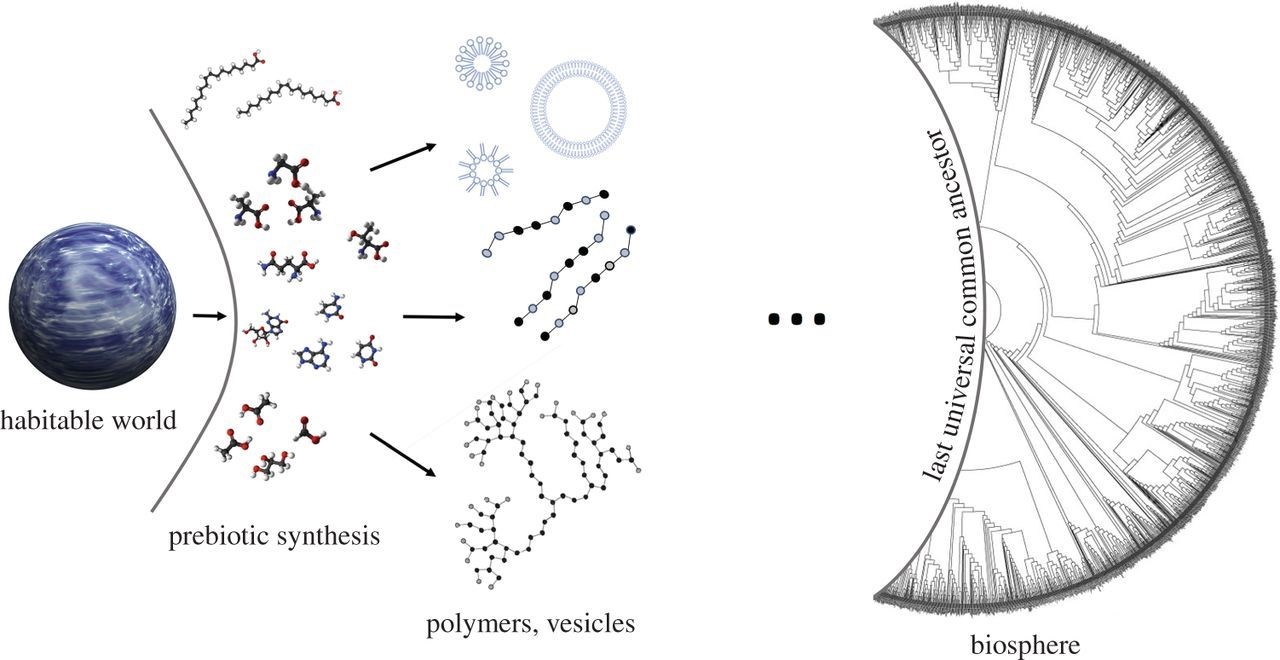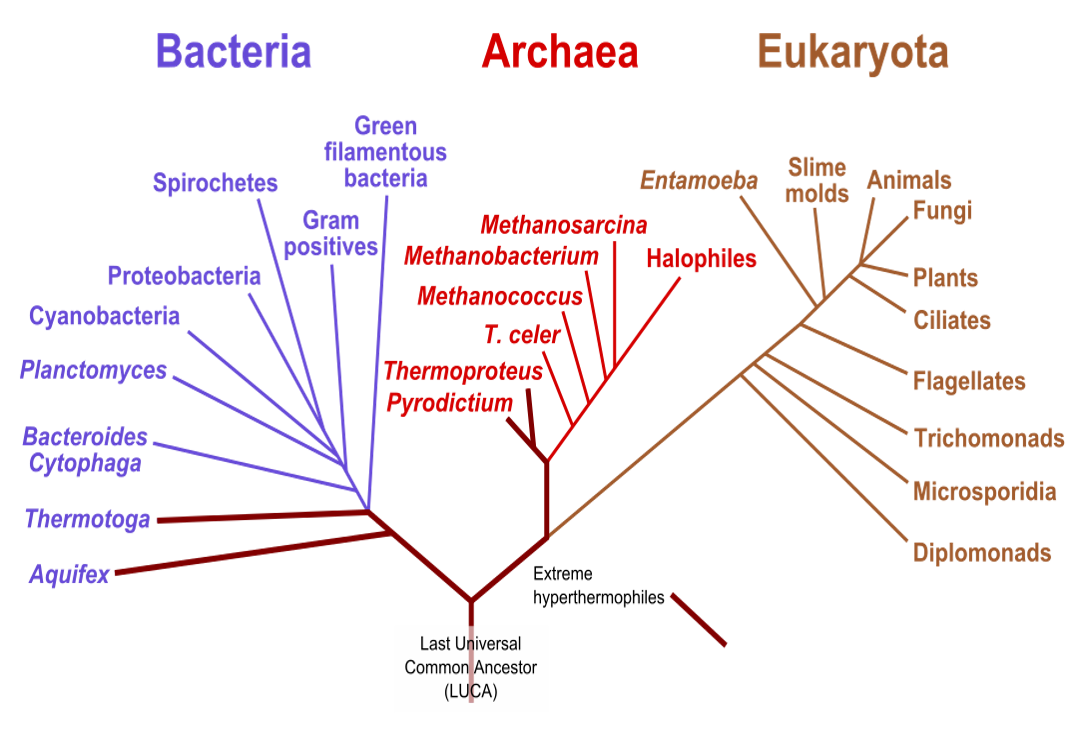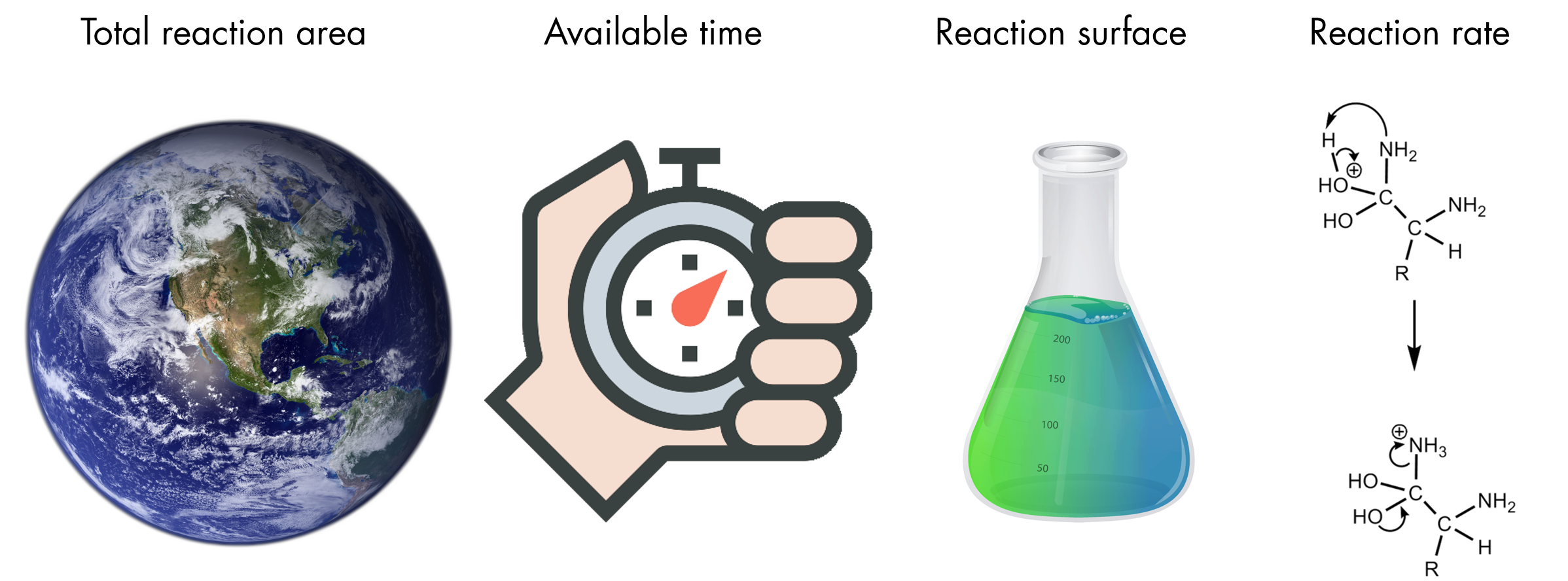I am starting a new blog focused on the Origin and Evolution of Life. Here is the first post.
It is best to view this post on the Origin and Evolution of Life blog, as that will have the most up-to-date version with better linking to references, etc. See The Origin and Evolution of Life.
The Origin and Evolution of Life
By training, some would call me a neuroscientist. However, technically1 I am a biologist (among other things). While neuroscientists can (and may) ruffle everyone else’s feathers with talk of the brain being the final frontier (obviously false, as that would still be [our need to conquer] space), there is an even more equally fascinating primordial frontier. This blog will be an attempt to bring a 90,000 lumens flashlight to that dark, swampy place, identify all the monsters who are guarding its mystery boxes, and get around them to find the secrets within.
So why now? Why this blog? What is the occasion? I could weave a start-up-esque tale about my Ah-ah! moment, but this blog is supposed to be about slicing and dicing to get closer to the truth. The origin should be just as incisive. Go take a hike, or pick up a book on animals, and really observe everything around you or in the book, all the interlocking parts and multifaceted interactions. If you really stop to think about it, everyday we encounter living parts of the natural world more complex, robust, and well-organized than our most advanced and highly-engineered technologies. We have become so used to life being all around us, that while we may be amazed by all the cool species (e.g. cuttlefish), we do not always take the next step and become amazed that any of this is actually here!
“It’s a magical world, Hobbes, ol’ buddy... Let’s go exploring!” - Calvin and Hobbes.
So the why is simple: I am going to be that kid who asks why? And keeps asking why even when given an “answer”, because this rabbit hole is much deeper than it might appear when first sticking one’s head inside.
Thus, to make sure we are all on the same page, I will concern myself with two related but different why questions that many have heard me talk about, discuss, and debate:
- How did life arise from non-living elements (abiogenesis)? What is the probability that this event could happen again and by what mechanisms did it already happen here on Earth?
- What are the mechanistic steps involved, and the intermediate stages seen, as animals evolve to gain new features or change their form/body plan (speciation)? Specifically, how does this occur on the molecular level (since at the end of the day, it is nucleic acids and proteins that must be changed)?
These questions have many sub-questions and vast areas to be explored. However, what I have found interesting in many discussions with people who have a wide range of expertise and life experiences (chemist, physicists, biologist, neuroscientists, engineers, humanities, clinicians, etc.) is there is a plethora of responses to many questions. A few examples:
-
Why does biology exhibit homochirality (Jiang et al., 2017; Burton
and Berger, 2018)? Specifically, why are nearly all amino acids
left-handed even though experimentally when trying to create
them, mixtures of left- and right-hand (precursor) molecules are
seen? People have often responded that this is a trivial matter of which
enantiomer won out in forming the first biomolecules or that the chemistry
would not be different. The former reasoning is neither satisfactory
nor mechanistic and the later is certainly wrong (see Enantiopure drug), take for
example R-(-)- and S-(+)-Carvone, which have different smells owing to
different reactions stemming from their specific configuration (thanks
5.310!).
- One should be inclined to ask, would life as we know it on Earth be different (e.g. have different forms and functions) if amino acids were right-handed? If not, then yes, it might be a trivial matter of who won out. If yes, well then, Dr. Watson, we are off to the races!
-
How do new functions arise via survival of the fittest and random
point mutations? Some claim infinite or nearly unimaginably large
timescales and sample sizes (e.g. number of organisms for a given species)
should make new and complex lifeforms or features evolving not really an
issue. This is often stated without giving any estimates for how many
organisms actually occurred over the restricted time we are dealing with on
Earth. And in the case of many mammals, the sample size may not be that
large at all.
- Instead, one might ask, beyond random point mutations, how else might large sections of the genome change that could allow greater leaps (translocation) or fitness neutral experimentation (e.g. gene duplication) leading to new functions?
- Or actually try to constrain the problem space (e.g. get order of magnitude estimates for number of animals) then ask, given what we know, does it appear to add up or do we have incomplete knowledge of certain natural processes?
- How did we go from early primates to humans in such a short span of time? This is a similarly met with assumptions that because it happened, it must have occurred via natural selection (by random mutation). When you ask, specifically, how? (e.g. what was the path that allowed the multi-functional changes needed for bipedal walking?), the response is often a lack of concrete knowledge or an appeal to probability and geologic timescales.
- What examples do we have of humans observing species evolving new functions? Bacteria evolving immunity to antibiotics is often cited, but is unclear whether they are evolving new functions as opposed to breaking old functions in a way that does not kill the bacteria or acquiring the needed protein (e.g. to degrade the antibiotic) from another bacteria (Blair et al., 2015). Domesticated animals (e.g. dogs and cats) do not count as valid examples, since they are instances of artificial selection, e.g. where an intelligent being in selecting based on a specified end-goal or function, something we assume nature is not doing and which dramatically changes the probability landscape.
Fundamentally, the main concern I have is with the immediate and constant desire by many I have discussed this with to appeal to probability and geologic timescales. I find this unsatisfactory and a way to get around elucidating mechanisms and, more importantly, stifles the desire to explore what we do not know about these fundamental questions. I will be quite biased against any many-worlds explanations, as unless someone provides an experimental way to test them, I will view them as another attempt to skirt elucidating mechanisms (e.g. since the claim is anything can happen given a infinite universes...okay). Given the immense complexity of life, it should raise people’s alarm bells that life could easily appear given undirected chemical processes or filters and questions should always be asked about whether we are missing or misunderstand some natural processes that can speed-up the creation and evolution of life.
Beyond the scientific questions, there is also the interesting observations about people’s varying reactions to the different questions discussed on this blog. That people become visibly agitated when you ask the question does our current understanding of evolution satisfactorily explain the complex lifeforms and abundance of species?, but usually seem to be unconcerned when you ask does our current understanding of chemistry provide us a mechanistic explanation for the spontaneous development of complex biomolecules that act as nanomachines?, is interesting. This might have to do with the long-running cultural battles of Evolutionists vs. Creationism and Intelligent Design (I will deal with ID’s irreducible complexity and specified complexity arguments in future articles). The result of this has been an instinctive defensive response to anyone questioning evolution, even if it is from a biologist pushing for a more mechanistic understanding that will likely lead to exciting new discoveries.
So, what are we left with? Many questions, a deep scientific literature, and a broad landscape to explore. This will be similar to my Brain Initiative Notes, in that it will be an ongoing living document that I update as new discoveries are made and I delve deeper into the literature. The initial phase will be focused on reading and collecting primary sources along with highlighting new questions and proposing experiments to test outstanding ones. After, I will begin doing broader syntheses of existing knowledge along with highlighting experiments that address the questions I and others have raised. The final step (“2,000 years later”...) will be to answer my initial two questions.
This is going to be an exciting journey. I aim for this to be a useful reference for those interesting in learning more about these fascinating areas of biology. I would like to leave readers with a small appetizer (some are closely related) of the multicourse “origin and evolution of life” meal.
- Is the “tree of life” concept correct or does it appear to be true since we use
that assumption as the basis for conducting protein and DNA sequence
analysis?
- More to the point, did eukaryogenesis occur more than once?
- What does this tree look like when we take into account the fact that DNA can be transferred between species?
- Is it possible to mutate one protein (e.g. a kinase) into one that is closely related in structure and function using single mutations with each intermediate step being functional? Can modeling help map out the most probable pathway?
- How often do “badly” designed organs turn out to be the most optimal
way to achieve a given function taking into account costs and other
trade-offs?
- A quintessential example of this is the mammalian retina, which is inverted (as in the nerves are between the photo-sensitive cells and the incoming light). Some claim (Lents, 2018) this is sub-optimal when it turns out for various reasons (e.g. supplying nutrients and repairing photo-sensitive cells), this type of configuration is very good for the problem it seeks to address.
- Is it possible to take one species (say Drosophila or the common fruit fly)
and mutate it at each step until it becomes similar to a species in a sister
family? e.g. turn a Drosophilidae into a Curtonotidae (quasimodo fly).
- This can be done by obtaining the full genomes of each species then computationally plotting a course of mutations that could take us from one species to the next, with potentially some cost for mutations that would be known to cause issues.
- If we cannot do this, is it because we failed to replicate the environment in which the non-embryonically lethal mutations still lead to death or are we missing something else?
- How did undirected or random chemical processes lead to (specific)
information containing, stable, and self-perpetuating DNA or RNA that
then led to the central dogma, cells, and life as we currently see
it?
- This assumes 3.5 billion years for evolution to take place from 1st life (Archean Eon).
- This assumes life didn’t originate on another celestial body (which changes the time scale by at most a factor of three or four given assumed age of the universe).
- This is separate from any later evolution questions, which is independent of the origin of life, e.g. once the system is setup, it can mutate/evolve, but the original setting up of the system by purely chemical or artificial construction is of great interest.
- How continuous is the fossil record in terms of showing transitional (but
potentially not super functional) body plans and other biological
information?
- How often are we able to infer soft tissue and cellular/protein structures from very long ago? How far back are they preserved so they can be used as additional evidence?
- At the end of the day, what changes is nucleic acids and proteins, not some
abstract ability to develop larger muscles or a eye that can focus light
better. Thus, what constraints exists that support/refute the ability of
entirely new protein (e.g. kinases), cellular (e.g. signaling pathways),
organism-level (eyes, etc.) functions to arise given natural selection and
random mutations + gene/chromosome/etc. duplication/translocation?
- Especially as this relates to new species.
- It would also be best to define what a ’novel’ biological function is, e.g. to classify protein, etc. level functions then determine how close they are on a functional and structural level. e.g. if the actual structure/function landscape is in a very small space relative to all possible structures/functions, then the problem becomes easier and more realistic.
See you-all in the next post!
References
Sara I Walker, N Packard, and GD Cody. Re-conceptualizing the origins of life, 2017. URL https://royalsocietypublishing.org/doi/full/10.1098/rsta.2016.0337.
Matt Kaplan. Filamentous figments in the apex cherts, 2011.
Craig P Marshall, Julienne R Emry, and Alison Olcott Marshall. Haematite pseudomicrofossils present in the 3.5-billion-year-old apex chert. Nature Geoscience, 4(4):240, 2011.
Wenge Jiang, Michael S Pacella, Dimitra Athanasiadou, Valentin Nelea, Hojatollah Vali, Robert M Hazen, Jeffrey J Gray, and Marc D McKee. Chiral acidic amino acids induce chiral hierarchical structure in calcium carbonate. Nature communications, 8:15066, 2017.
Aaron Burton and Eve Berger. Insights into abiotically-generated amino acid enantiomeric excesses found in meteorites. Life, 8(2):14, 2018.
Jessica MA Blair, Mark A Webber, Alison J Baylay, David O Ogbolu, and Laura JV Piddock. Molecular mechanisms of antibiotic resistance. Nature reviews microbiology, 13(1):42, 2015.
Nathan H Lents. Human Errors: A Panorama of Our Glitches, from Pointless Bones to Broken Genes. Houghton Mifflin Harcourt, 2018.
Footnotes
1While I was in a neuroscience lab, my PhD is from Stanford Biology, not Neuroscience.
 stanford
stanford linkden
linkden github
github goodreads
goodreads medium
medium twitter
twitter




